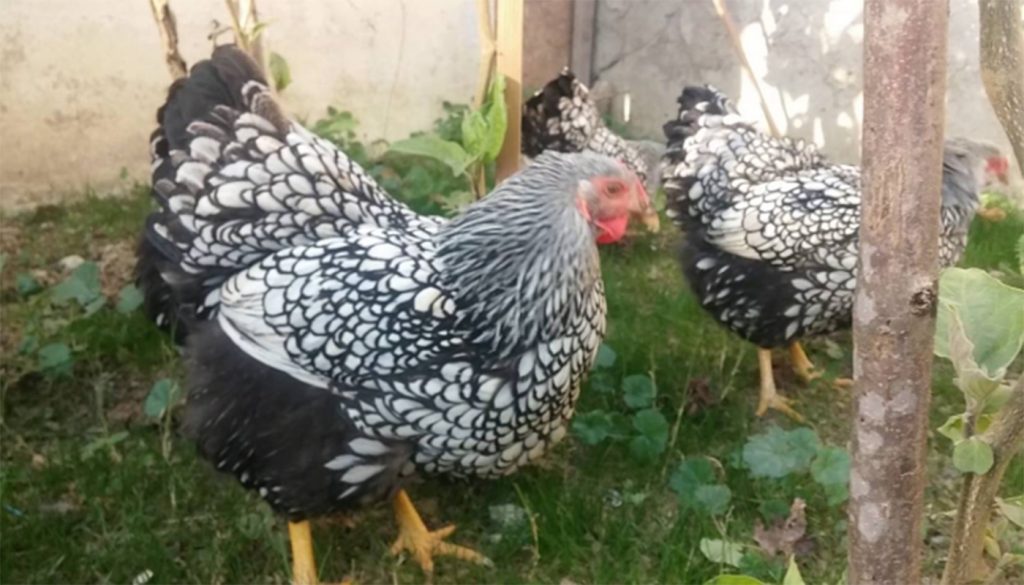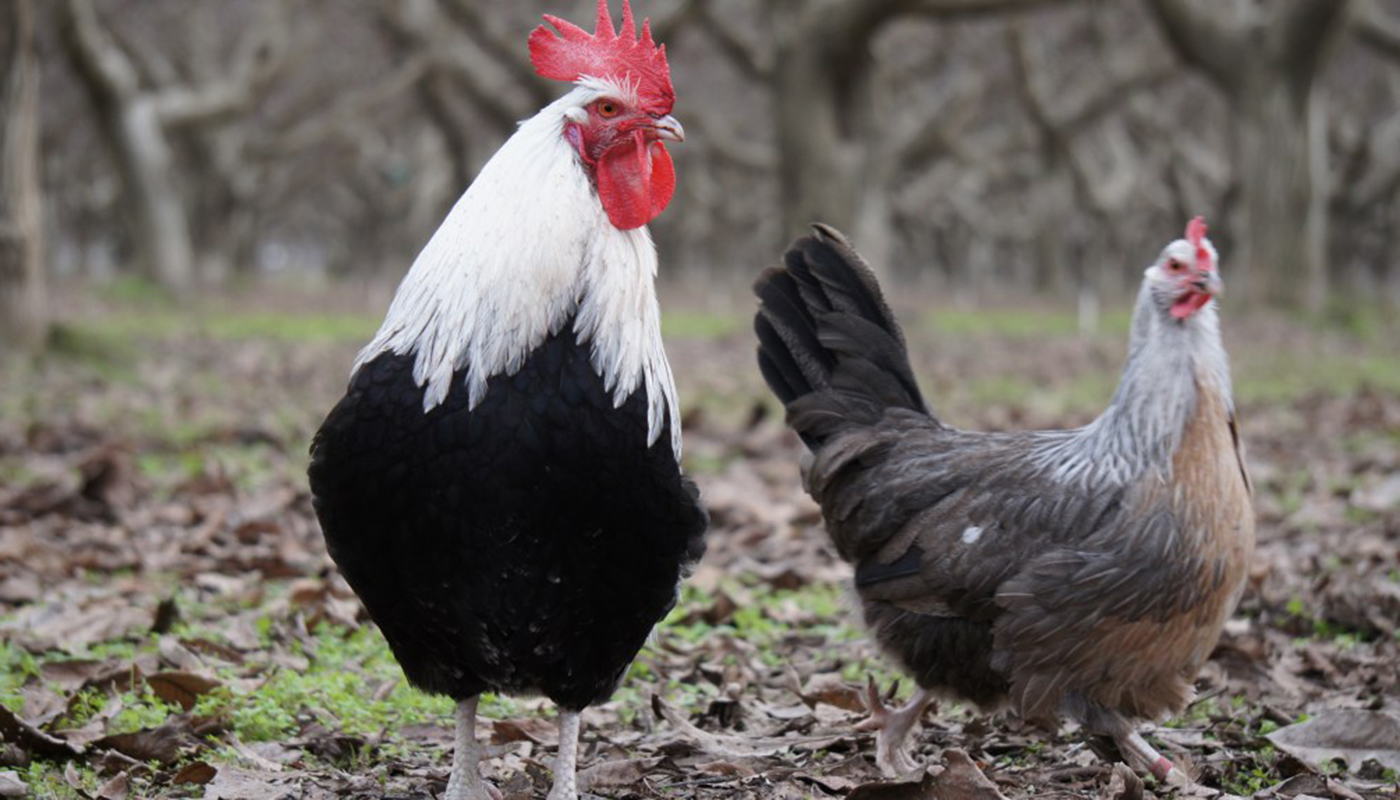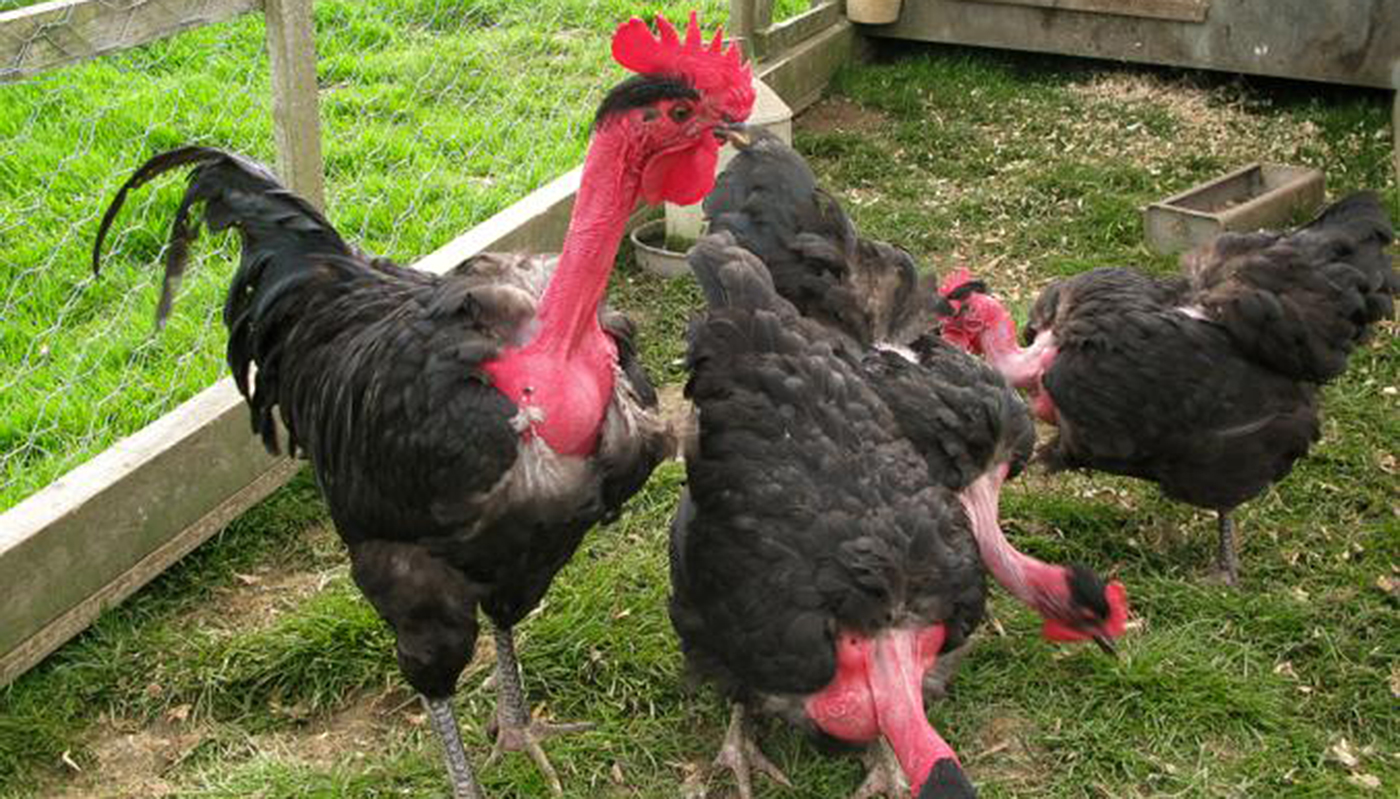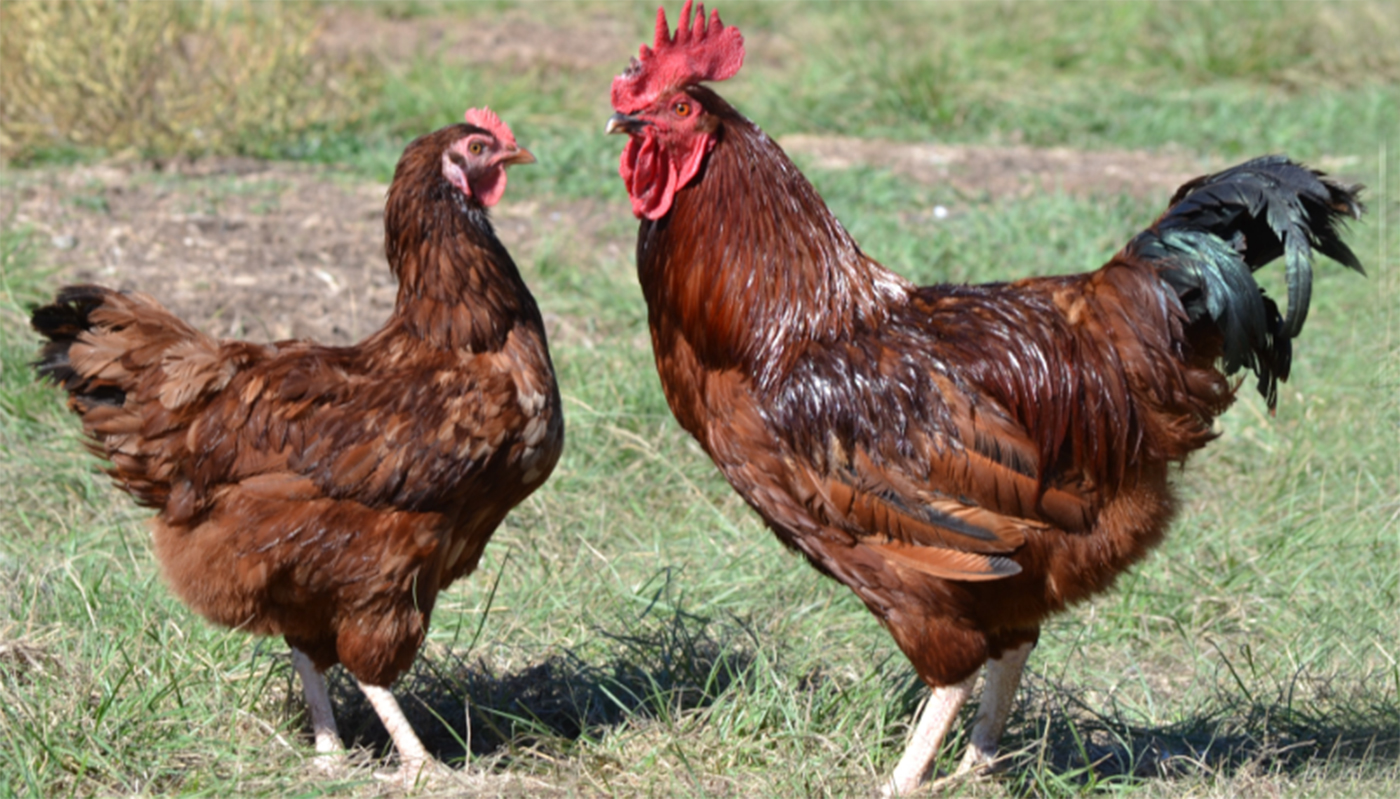
The Wyandotte birds are an American breed that is a favorite backyard chicken due to its great egg production, hardiness and easy-going friendly nature.
They come in a variety of amazing plumage colors sporting a rose comb positioned on their head like a cute little red hat. Their magnificent plumage and the way they carry themselves makes them supermodel show bird material. They do well in confinement and adapt to most garden sizes although they are of a larger breed chicken so they do prefer a bit more room to roam about and stretch their thick yellow legs in.
Their tender yellow meat and ample sizes make them an excellent table bird.
| Country of Origin: | America |
| American Poultry Association: | Recognized as a breed of chicken in the United States |
| Chicken Category: | Large Breed |
| Chicken Class: | American |
| Bantam Variety Available? | Yes – Rose Comb Clean Legged Bantam Classificationn |
| Good Starter Chicken? | They are a low maintenance chicken with a nature that makes them a good starter chicken. |
PURPOSE⇒ |
Eggs: They are good egg layers.
They lay large brown eggs up to 260 per year They will lay steadily throughout the year. They start to lay eggs from around 20 weeks old.
Meat: They have yellow meaty carcasses which are excellent for a table bird
Breeding: These birds can be bred and as they are not on the endangered list finding good breeding stock should not be a problem.
If you are breeding the Wyandotte for show choosing the correct hens and rooster bloodline is crucial. As there are only certain colors accepted by the APA getting the breeding of this right is crucial. For advice on breeding please check our guide to breed poultry.
Foraging: They love to scratch and forage about ridding the garden on pests.
Show Bird: They make a great show bird
Pets: Friendly, easy-going nature make them good pets
Other: They love to garden with their humans, scratch
out weeds and get rid of pesky pests that your garden can do without. They will give your organic garden a lot of nutritious fertilizer to ensure great blooms and tasty vegetables. |
| Flyers? | They can fly but not very high |
| Noisy Birds? | These chickens are very chatty chickens and tend to be on the noisy side. |
| Interaction with other chickens: | They get along well with other chickens. But like to be the dominant divas of the flock. The cocks will vie for dominance, so it is best to not mix them. As with any flock if you are introducing new birds it is best to slowly socialize them with the flock. |
| Good with kids? | They are good with supervised children even the roosters have a gentle disposition. Although the rooster can get a touch protective and may try to attack any other animal that comes near the child. |
HISTORY
Four people were responsible for creating the Wyandotte breed in the United States in the 1870’s. The very first variety of the Wyandotte to be created by John Ray, H. M. Doubleday, Fred Houdlette and L. Whittaker was the silver-laced one. Making it the first variety of this breed to be accepted to the Standard of Perfection by the American Poultry Association in 1883.
Although it is known who was responsible for creating the breed it is still a bit of mystery as to its heritage. It is speculated that the breed was created by the initial crossing of the dark Brahma and silver spangled Hamburgs. The Brahma’s being responsible for the Wyandotte’s rose comb and the color pattern of the Brahma.
Before the bird was admitted to the Standard of Perfection the bird was known as the either the American Sebright or the Sebright Cochin.
The name was changed to Wyandotte named after the indigenous Wyandot people of North America and bred as a dual-purpose bird.
Today there are 9 official colors and quite a few unofficial colors of the Wyandotte.
The Bantam variety of the Wyandotte was first accepted to the Standard of Perfection by the American Poultry Association in 1993.
The Wyandotte was listed by the Livestock Conservancy in 2015 as recovering after their numbers had declined. But thanks to breeders interests their number rose and they were taken off the list in 2016 as they were no longer considered to be at risk.
CHARACTERISTICS |
|
|---|---|
IDENTIFICATION⇒ |
Appearance/Body: Wyandotte is large, round compact birds with
a deep full well-rounded breast. It has red earlobes, face and wattles with clean yellow legs.
Color(s) Columbian, Blue, Silver Penciled, Black, Partridge, Buff, White, Silver Laced and Golden Laced
Comb: They have a rose comb
Ave. Weight: Hens/Pullet 5.5 – 7 lbs.
Cockerel 7 – 8 lbs. |
| Life Expectancy: | The average lifespan is 8 years |
| Health: | They do not have any known health issues. |
| You may Also Like: | HOW TO TELL IS A CHICKEN IS SICK |
| Temperament: | They active, friendly and mostly easy going. They can be on the dominant side. |
| Socialize Behavior? | They get along well with all other animals |
| You may Also Like: | HOW TO SOCIALIZING YOUR NEW CHICKENS |
| Known predators: | Most domestic animals leave them alone but it is always best to keep an eye on dogs and cats. If hawks and or foxes are in your area it is always best to take precautions. Check with local animal shelters, zoos, vets, animal control and or pet stores about common predators in your area. |
| Conservation Status: | These birds conservation status is recorded as “not at risk”. Chickens conservation status can be checked with your local or national conservation centers. |
IDEAL ENVIRONMENT |
|
|---|---|
| Garden Size: | These great birds adapt well to any garden size and do well in confinement. However, as with any animal they love to roam free and free-range. Although they do not need as much space as most chickens |
| Ideal Climate: | They do not mind the cold and whether the wintery months well. They are a very hardy bird but may need a bit of extra shade in extremely hot weather due to their excess plumage. |
| Ideal Coop: | The rule of thumb for any coop is 50 cm x 50 cm per hen/rooster in the coop. Ensure there is a good space for the nesting boxes and nightly roosting rails at least 1.5 inches wide. Good ventilation for air but not too drafty especially in winter. It is always a good idea to raise the coop off the ground to give the birds a dry place to roost and lay especially in wet weather. |
| Ideal Coop Run: | It is a good idea for safety from predators to completely cover the coop run even though these birds have not been to know to fly very high. The still can fly and they make a good meal for the larger known chicken predators. |
| Ideal Flock Size: | They like to socialize and have long noisy conversations so there should be more than one chicken in the flock. |
| Special Instructions: | Other than lots of shade and cool water in the extreme heat these birds have no special requirements. |
| Accessories: | The following accessories are ideal for your coop: Nesting boxes Straw for the boxes and roosting area Roosting rails Perches Water troughs/bowls Food bowls/feeders Heating lamp(s) Animal carrier for transport purposes |
| You may Also Like: | 45 FREE DIY CHICKEN COOP PLANS, TUTORIALS AND DESIGNS |
WHERE TO FIND THESE BIRDS TO ADD TO YOUR FLOCK
There are a lot of live poultry outlets and farms that stock these beautiful birds. But if you want to be sure you are getting the accepted standard breed of Wyandotte to check with a registered breeder. You can find a list of breeders on the American Poultry Association. If you plan on breeding your chickens, you will want to make sure that they are from a good bloodline the APA can help with this and may also have any special requirements, attention or care they may need.
CARING FOR THE BIRD(S)
Please click here for our full guide to “Taking care of chickens”. This is a comprehensive guide to owning chickens. It covers where to start from choosing your ideal flock, the coop that would best suit your garden, your bird and you to buying and bringing your bird(s) home.
GENERAL
As they are a very weather hardy chicken they do not have a lot of special requirements. They are a great dual-purpose bird for the backyard they make excellent pets and beautiful show birds.
GROOMING
Other than the preferred dust baths that all chickens enjoy as a grooming routine they do not require much in the way of this. Although adding some special herbs such as lavender to the dust bath helps to maintain the gorgeous plumage. It is a good idea to regularly check them for mites, lice and various other parasites. As these birds do not mind the attention it should not be too great a task to check for these pests at least once a week. Always get your birds de-wormed on a regular basis especially if they are around other animals or interacting with kids.
DIET AND NUTRITION
Wyandotte loves indulging in table scraps and will eat most vegetable or fruit leftovers. But it is best to limit treats and ensure they get enough of either chicken pellets, grains, chicken mash or grain mix from 8 weeks old and older. This is best fed to them in the morning before they go out to feed off what they have foraged.
For baby chickens, the best is always Chick Starter when they are under 8 weeks old.
Laying hens should get extra protein and calcium in their diets to ensure the quality of their eggs and to keep them in tip-top health.
Please see our comprehensive guide to “Feeding your chickens” for more information of the different types of chicken feed for chicks, hens, laying hens, roosters, etc. and where to buy the feed and approximate cost of the feed.
SOCIALIZING THE BIRD(S)
Although Wyandotte has a laid-back nature and is somewhat overly friendly they can also be dominant drama queens. Especially the roosters. These hens want to be and usually end up at the top of the pecking order.
If you are going to mix your chicken breeds, make sure the breed you are going to get is compatible with your current flock. You do not want to cause unnecessary stress in the hen house which could end with disastrous results.
As with any newcomer to the roost, you will have to quarantine the bird for 7 – 31 days to ensure it does not have any unwanted critters or disease that could spread to your current flock.
Even though they are a laid-back docile breed, even they have a pecking order, so it is advisable to socialize them slowly and determine when it is right to allow newcomers to become a permanent part of the flock.
NOTES / SPECIAL INSTRUCTIONS
As they are no longer registered as “recovering” and are in fact registered as “not at risk” conservation status they should not be any restrictions or limitations on these birds. For advice on what the bird’s conservation status and orders are, please check with your local conservation department.
For breeders, it is imperative that you always check your bird’s bloodlines and ensure you are buying your birds from a reputed breeder/farm. In order to sell birds of such stature, they have to be recorded and documented, always check with local animal breeding organizations for these records.
These legitimate documents are also required should you wish to show your bird(s) in various poultry shows/competition showings.
For information and advice on adopting rescued animals, you can visit or contact your local animal welfare center.
Video
USEFUL LINKS
- Caring for your Chicken
- Feeding
- Health
- Socializing your Chicken
- Breeding Chicken
- Raising Chickens A-Z
- Hatching Eggs
- What is Molting
- Animal Shelter (ASPCA)
- American Veterinary Medical Association
- American Poultry Association
- American Animal Welfare Society
- American Animal Control
- American Animal Husbandry Society
References
- https://en.wikipedia.org
- https://livestockconservancy.org
- https://www.roysfarm.com
- https://www.mypetchicken.com
- https://www.backyardchickens.com
- https://www.feathersite.com/
 Dorking Chicken Breed – Everything You Need to Know
Dorking Chicken Breed – Everything You Need to Know Old English Game Chicken Breed – Everything You Need to Know
Old English Game Chicken Breed – Everything You Need to Know COMMON CAUSES OF HEALTH ISSUES,SYMPTOMS AND PREVENTATIVE MEASURES
COMMON CAUSES OF HEALTH ISSUES,SYMPTOMS AND PREVENTATIVE MEASURES Lakenvelder Chicken Breed – Everything You Need to Know
Lakenvelder Chicken Breed – Everything You Need to Know Buckeye Chicken Breed – Everything You Need to Know
Buckeye Chicken Breed – Everything You Need to Know Naked Neck Chicken Breed – Everything You Need to Know
Naked Neck Chicken Breed – Everything You Need to Know TO HATCH OR NOT TO HATCH? – HATCHING EGGS PART 1
TO HATCH OR NOT TO HATCH? – HATCHING EGGS PART 1 45 FREE DIY CHICKEN COOP PLANS, TUTORIALS AND DESIGNS
45 FREE DIY CHICKEN COOP PLANS, TUTORIALS AND DESIGNS Serama Chicken Breed – Everything You Need to Know
Serama Chicken Breed – Everything You Need to Know 10 Chicken Breeds that have Glossy Black Plumage
10 Chicken Breeds that have Glossy Black Plumage Taking Care of Your Chicken Flock
Taking Care of Your Chicken Flock Rhode Island Red Chicken Breed – Everything You Need to Know
Rhode Island Red Chicken Breed – Everything You Need to Know